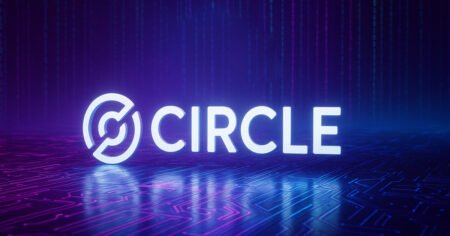Recent Advances in US Blockchain Legislation: Understanding the GENIUS Act and the Blockchain Regulatory Certainty Act
In recent developments, US lawmakers have taken significant steps towards advancing blockchain regulation. On May 21, 2023, the Senate approved the Government and Enterprise Need for Innovation in the United States Act—better known as the GENIUS Act—allowing for a formal debate on the legislation. This motion occurred shortly after a successful cloture vote, highlighting a bipartisan approach to modernizing digital financial systems. Concurrently, the House reintroduced the Blockchain Regulatory Certainty Act, aimed at clarifying regulations for blockchain developers. Here’s a deeper dive into these legislative efforts and their implications for the blockchain ecosystem.
The GENIUS Act: Key Provisions and Implications
The GENIUS Act aims to establish stringent standards for stablecoin issuance, mandating that issuers maintain ample reserves, typically composed of high-quality liquid assets like US Treasuries or insured deposits. This requirement is intended to ensure that all outstanding liabilities are fully backed on a 1:1 basis. The act also prohibits issuers from offering yield-bearing products, thereby minimizing risks associated with these financial instruments. Moreover, the GENIUS Act enforces strict compliance with Know Your Customer (KYC) procedures, suspicious activity monitoring, and Anti-Money Laundering (AML) protocols. Depending on the issuance scale, issuers may be subject to federal oversight or regulation from state authorities, fostering a robust framework for stablecoin operations.
Bipartisan Support and Legislative Process
The path to the GENIUS Act’s current status illustrates significant bipartisan support for blockchain innovation. The recent 69–31 vote to allow the debate showcases a growing consensus within Congress on the importance of a regulatory framework for blockchain technologies. The legislative process includes ample opportunities for amendments, allowing senators to propose changes before any final vote occurs. This approach encourages thorough discussions, potentially leading to improvements in the bill’s provisions and fostering an environment where different viewpoints can be considered.
The Blockchain Regulatory Certainty Act: Safeguarding Developers
While the Senate engages in discussions about the GENIUS Act, the House focuses on bolstering protections for software developers involved in blockchain technology. The reintroduction of the Blockchain Regulatory Certainty Act, spearheaded by Congressmen Tom Emmer and Ritchie Torres, reflects an ongoing effort to clarify regulatory responsibilities for developers and blockchain service providers. This legislation proposes a federal safe harbor, ensuring that those who do not hold customer assets are not categorized as money transmitters or recognized financial institutions. By doing so, the bill aims to foster innovation by reducing unnecessary regulation for non-custodial actors.
Defining Developer Responsibilities and Rights
A significant component of the Blockchain Regulatory Certainty Act is its definition of what constitutes a "blockchain developer." It aims to distinguish between entities that create or maintain software for decentralized networks and those that actively control digital assets. This distinction is critical because it ensures that developers are not burdened by licensing obligations unless they have direct control over users’ digital assets. Such clarity allows developers to focus on innovation without the fear of regulatory penalties, promoting a healthier ecosystem for blockchain technology.
The Future of Blockchain Regulation
Though the House has not yet scheduled a markup or floor vote for the Blockchain Regulatory Certainty Act, its introduction signals a renewed momentum towards distinguishing between custodial and non-custodial roles within the digital asset landscape. By clarifying the responsibilities and protections for blockchain developers, these legislative efforts aim to remove barriers to entry for innovation in the industry. As these discussions progress, the potential for more comprehensive and coherent regulations increases, positioning the United States to be a leader in blockchain technology and financial innovation.
Conclusion: The Road Ahead for Blockchain Legislation
The advancements in the GENIUS Act and the reintroduction of the Blockchain Regulatory Certainty Act mark a crucial step in shaping the future of blockchain regulation in the United States. With bipartisan support and a clear focus on innovation, these legislative efforts aim to create a balanced framework that encourages growth while ensuring consumer protection. As the debates unfold, stakeholders in the blockchain ecosystem, including developers and issuers, will be closely watching the outcomes, hoping for favorable changes that will foster both innovation and compliance. The evolving legislative landscape holds the promise of a thriving blockchain economy, paving the way for technological advancements that could redefine financial systems in the years to come.

















